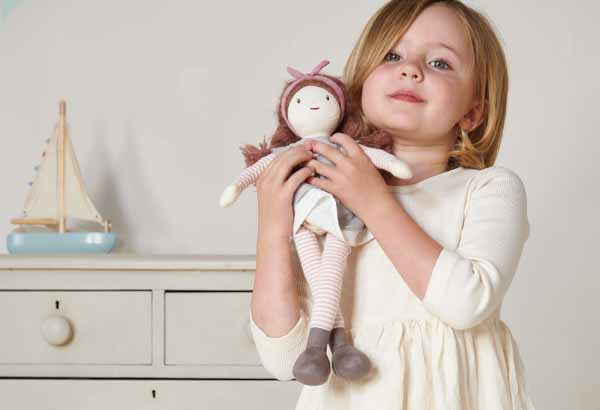The playroom is a teacher

Your play space can ask questions.
Imagine a room where all the furniture is soft, like at soft play. Now put your child’s toys in that room. How would it affect her play?
Now put those same toys in the garden. And now on a sandy beach.
The furniture you use and the toys you offer have a direct effect on what learning takes place.
Now imagine a room with organised storage.
A basket for each type of toy, with labelled drawers, an alphabet chart and number frieze on the wall.
Your child can find the toys she wants. She learns that everything has its place. Even before she can read she associates the name label on the drawer with its contents.
I know that that box contains my wooden railway because the label starts with a ’t’ for train.
What games would she invent if you left a box of dice for her to play with or a selection of sand timers? How would her play change if you made craft materials freely available?
The people your child encounters will also have an effect on her play. Is she alone? Does she share the space? Do people visit or pass through? Is it peaceful or distracting?
Tidying up, putting things back in the right place, is an important skill. It’s part of sorting, of early maths. Where does this wooden animal belong? In the box with the farm? In a box just for animals? Or with the wooden railway? There are no wrong answers. The learning happens simply by making a choice. You need a reason and that means you must think about the toy’s properties and uses.
The environment is the third teacher
The preschools of Reggio Emilia, Italy, are famous for their child-centred ideas with regard to early learning. Central to their philosophy is an emphasis on the importance of the environment. You, the parent, are your child's first teacher. Her teacher is the second. And the environment is the third.
An alphabet chart on the walls is an easy - and obvious - way for the room to 'teach'. But making it possible for your child to sort and tidy materials is also a learning experience.
What could she achieve if you made more resources accessible? Could she lay the table? Or polish her shoes? How would she put a portable step to use? To wash her hands? To hang up her coat?
Put yourself in your child's shoes.
How can the room help her to learn?
The types of toys you offer also matter
If you only ever offer closed-ended materials such as puzzles, or electronic toys that entertain rather than challenge, how will your child learn to problem- solve? Difficult tasks promote creativity and perseverance. Your playroom should be full of these. What change could you make to your play space today to encourage a new type of play?
Open-ended Play
Some toys are better than others. They invite investigation and discovery and draw us into storytelling and creativity. They are open-ended. They fill your place space with possibility. Read more about open-ended play on the blog.





